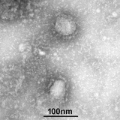The novel coronavirus (2019-nCoV) has been declared to be a new international health emergence and no specific drug has been yet identified. Several methods are currently being evaluated such as protease and glycosylated spike (S) protein inhibitors, that outlines the main fusion site among coronavirus and host cells. Notwithstanding, the Heptad Repeat 1 (HR1) domain on the glycosylated spike (S) protein is the region with less mutability and then the most encouraging target for new inhibitors drugs.The novelty of the proposed approach, compared to others, lies in a precise training of a deep neural network toward the 2019-nCoV virus. Where a Siamese Neural Network (SNN) has been trained to distingue the whole 2019-nCoV protein sequence amongst two different viruses family such as HIV-1 and Ebola. In this way, the present deep learning system has precise knowledge of peptide linkage among 2019-nCoV protein structure and differently, of other works, is not trivially trained on public datasets that have not been provided any ligand-peptide information for 2019-nCoV. Suddenly, the SNN shows a sensitivity of $83\%$ of peptide affinity classification, where $3027$ peptides on SATPdb bank have been tested towards the specific region HR1 of 2019-nCoV exhibiting an affinity of $93\%$ for the peptidyl-prolyl cis-trans isomerase (PPIase) peptide. This affinity between PPIase and HR1 can open new horizons of research since several scientific papers have already shown that CsA immunosuppression drug, a main inhibitor of PPIase, suppress the reproduction of different CoV virus included SARS-CoV and MERS-CoV. Finally, to ensure the scientific reproducibility, code and data have been made public at the following link: https://github.com/bionick87/2019-nCoV
翻译:新颖的科罗纳病毒(2019-nCoV)已被宣布为一个新的国际卫生新出现,尚未发现任何特定药物。目前正在评估几种方法,如蛋白质蛋白抑制剂(S),它概述了科罗纳病毒和宿主细胞的主要聚变点。尽管如此,在血球峰值(S)上的七重重复1(HR1)域,这个区域不那么易变,然后是新抑制剂药物的最令人鼓舞的目标。 与其它方法相比,拟议方法的新颖在于对2019-nCOV病毒的深度神经网络进行精确培训。 西亚神经网络(SNN)已经受过训练,可以将整个2019-nCOV蛋白蛋白蛋白质序列分解掉。 以这种方式,目前的深层次系统可以确保2019-nCoV蛋白蛋白质的精密联系(2019-nCoV)结构和其他作品的精密性,在公共数据集上没有受过微不足道的培训,而S-nex-nex-lexI3的内基的精度的内核核数据流数据已经显示了20-cal-cal-cal-cal-l-ma-lexI。



